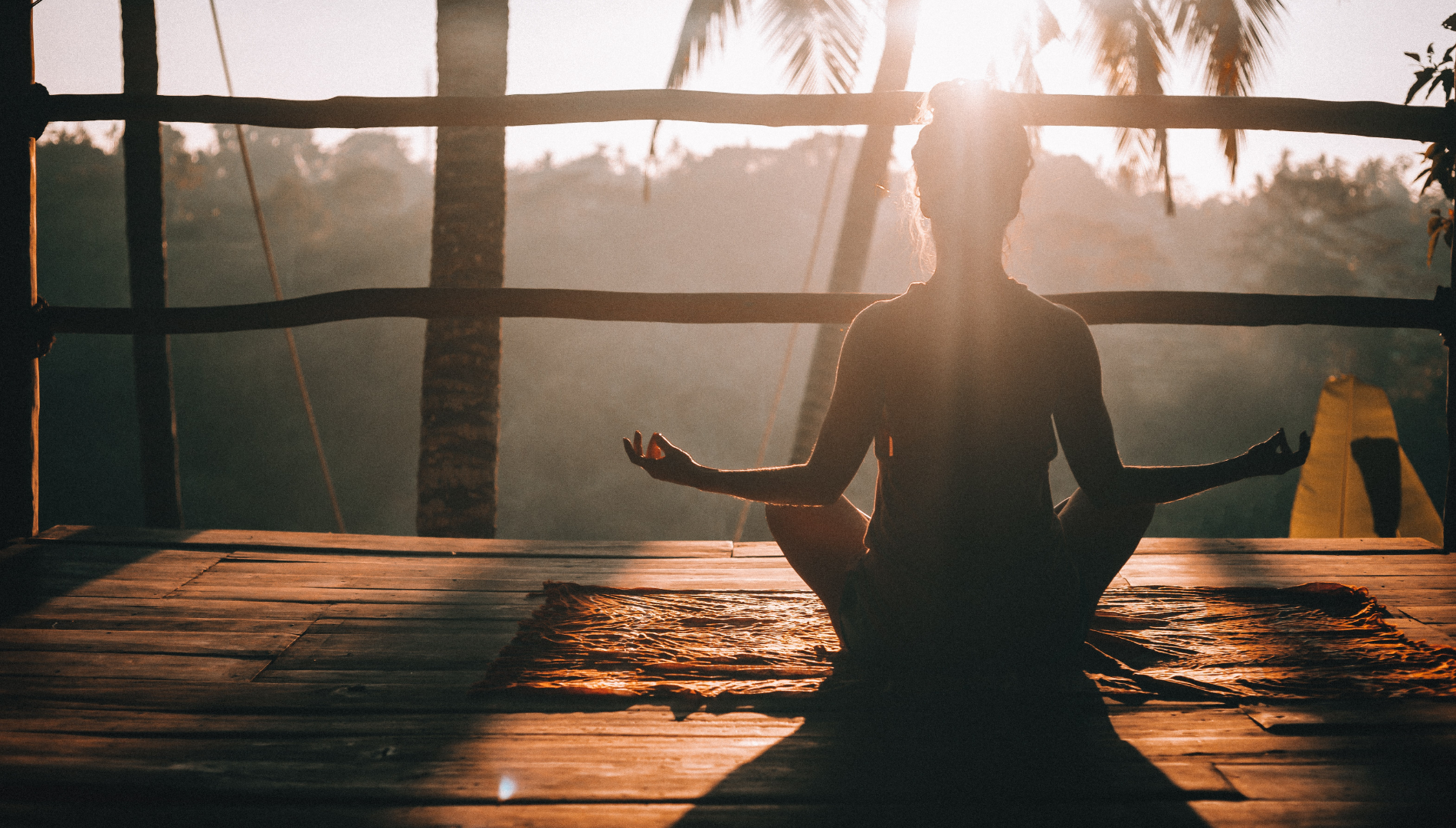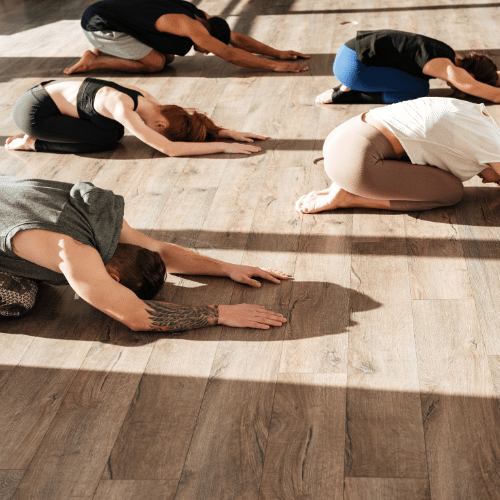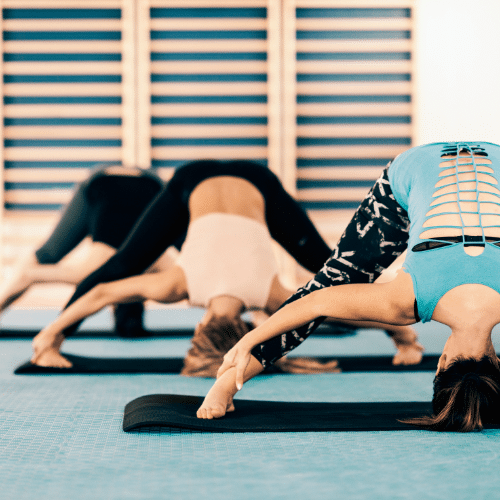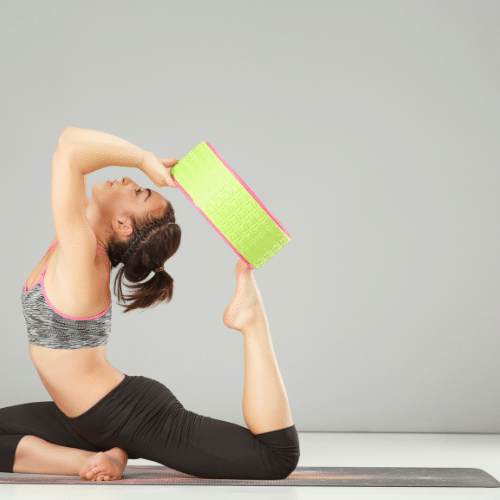While yoga’s ancient origins date back to 2700 B.C., today yoga is a popular way to relax, manage stress, and improve overall well-being. With its many health benefits, yoga is a favorite of about 300 million people across the world.
In the US, more than 37 million Americans practice yoga. It’s common now to see yoga studios almost anywhere you are in the country.
However, did you know that yoga is not designed to be a luxury workout? It is a spiritual belief system that aims to train both the body and mind.
What Exactly Is Yoga?
Yoga is an ancient practice that originated in India thousands of years ago. The term “yoga” comes from the Sanskrit word “Yuj,” which translates to “to join” or “to unite.” During its early years, people use yoga to create a union between the mind, body, and spirit
Throughout the millennia, different interpretations of yoga have been developed and popularized. In the western world, most people see yoga as a posture-based physical workout that offers benefits such as increased physical and mental energy.
Yoga Background: The Ancient Origins and Evolution of Yoga
There are no historical records that show the actual ancient origins of yoga. Different yogis and scholars are arguing about when the practice of yoga begins. Some say that it started about 5,000 years ago, while others say that it has been in existence for about 10,000 years.
Despite not having historical proof detailing how yoga started, there is a famous myth that tells how this practice comes into existence. According to the legend, Shiva was the first one to practice yoga and reached enlightenment because of it. However, since no records can prove that Shiva existed, this story will likely continue only as a legend.
Yoga is an ever-evolving practice that has seen significant changes and improvements over several millennia. Even in the last hundred years, there have been significant alterations that make modern yoga different.
To help you understand how yoga evolved into the practice we know today, here is an overview of its history:
Pre-Vedic and Vedic Period
The earliest mention of the word “Yuj” is first seen in the ancient Indian text called Rig Veda, one of the ancient scriptures in Brahmanism. It is a collection of Vedic Sanskrit hymns that is believed to be composed sometime between 1500 and 1000 B.C. It’s difficult to determine when exactly it was composed since Vedas were only orally passed from one generation to another at that time. Written versions of Vedas, including Rig Veda, only became available much later.
It was during the Vedic period that there is mention of a group of yogis that lived in isolation. They believed that the most conducive environment for yoga is where you are in seclusion and close to nature.
Pre-Classical Period
The Upanishads were written during the pre-classical period. It is a collection of over 200 Vedic texts that mainly discusses topics about Brahman and Atman. It also discusses the relationship between the two. In Hinduism, Brahman connotes the absolute reality in the universe, while Atman refers to the self-existent essence of a person.
It was also during this period that Bhagavad Gita was created. It is a 700-verse scripture and the oldest yoga scripture known to mankind. Due to this, it is often referred to as the “Bible of yoga.”
The Bhagavad Gita presents three paths of yoga, in which people can seek enlightenment. These are Bhakti Yoga (known as the path of the heart), Jnana Yoga (known as the path of intellect), and Karma Yoga (known as the path of the work).
Since these paths are dedicated to the practice of yoga at that time, it is less likely that you can still see yogis practicing these paths. However, these paths paved the way for the kind of yoga most people practice today.
Classical Period
During the classical period, an author and sage named Patanjali systematized yoga and released a collection of Sanskrit sutras called Yoga Sutras. These sutras provide yogis with guidance on how to achieve peace and reach fulfillment. Due to this, many people consider Yoga Sutras as the foundation of classical yoga.
It is also during the classical period that ashtanga or the eight limbs of yoga come into existence. These steps help yogis to live a purposeful life and acknowledge the spiritual aspects of their nature. The eight limbs of yoga are as follows
-
- Yama: Deals with ethical rules and a sense of integrity
- Niyama: Deals with self-discipline and spiritual growth
- Asana: Deals with physical postures in yoga
- Pranayama: Deals with gaining mastery over breath control
- Pratyahara: Deals with sensory transcendence
- Dharana: Deals with concentration and relieving oneself of outside distraction
- Dhyana: Deals with meditation and contemplation
- Samadhi: Deals with the state of ecstasy
Post-Classical Period
In the post-classical period, many yoga gurus began to reject the teachings of the ancient Vedas. It was during this period that Raja Yoga and Jnana Yoga became more widely practiced yoga paths. It was also during the post-classical period when the Hatha Yoga path became popular. This path emphasizes the practice of physical yoga, making it the closest path to modern yoga practices.
Modern Period
It was during the modern period that yoga was formally introduced to Western civilizations. Due to the vast difference in cultures, many elements of yoga were westernized.
Many yoga gurus also traveled to the West during this period. One of them is Swami Sivananda, who has written over 200 books on yoga and other related philosophical topics. Another one is Maharishi Mahesh Yogi, who developed and popularized Transcendental Meditation (TM). This silent mantra meditation technique became popular across the globe and is still practiced by millions of people.
The Future of Yoga
Throughout several millennia, we’ve seen yoga significantly evolve into the practice we know today. While yoga is seen as a workout fad that has significant health and wellness benefits, we can expect it to continuously change and improve in the years to come.
No one can predict the future of yoga or whether it may remain as popular in the years to come. Regardless, the best thing you can do is that it will continue to improve for the better, so it can be more beneficial for the generations to come.









